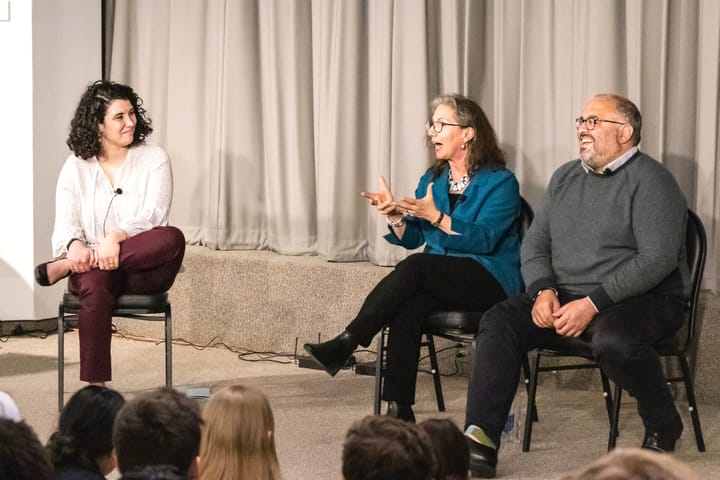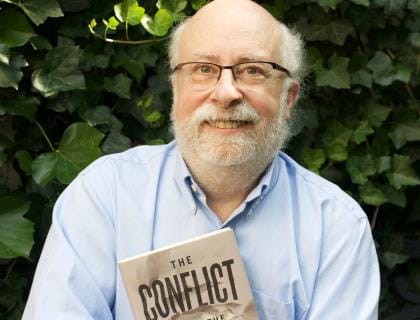Black Visions Collective Activist Discusses the Need for Intersectional Environmental Justice in Campus Virtual Visit
Kyra Brown, an environmental justice activist and social media strategist at Black Visions Collective, gave a virtual talk on the Black Lives Matter movement, policing and environmental justice for the college community this past Thursday; the talk covered the inextricable links between racism and climate change while emphasizing the need to make the environmental movement accordingly intersectional. Assistant Professor of Environmental Studies Ashwin Ravikumar arranged Brown’s talk and facilitated the discussion.
Brown, an alum of the University of Minnesota, listed “video games, sewing and abolishing the police” as a few of their interests. They currently work as the social media strategist for Black Visions Collective, a Minneapolis-based organization that gained national attention this summer for its work towards creating a future in which “all Black people have autonomy, safety is community-led,” according to the organization’s website. The organization played a central role in the uprising for racial justice that occurred after the murder of George Floyd by the Minneapolis Police Department in May.
During their talk, Brown’s central point was that the intersection of racism and climate change results in a clear relationship between abolition and the climate crisis. Brown outlined defunding the police as “one of the methods” used to work towards total abolition, and explained that “defunding the police is actually crucial for environmental justice … it really does go hand in hand.”
According to Brown, the pollution emitted by prisons is one example of this link. “They’re not doing well on a human rights scale, of course,” they said. “But even people who like to look distinctly at the numbers should be able to see the pollution caused by running these massive prisons.”
Brown added that defunding the police would also mean that funds could be moved towards environmental justice initiatives. “Environmental justice organizations’ efforts are always underfunded,” they said. “We’re able to do so much without the funding, so imagine with it — it would be a much greater scale.”
Brown spoke on their work to stop the use of a trash incinerator in Northern Minneapolis as one of the tangible impacts of environmental racism in the United States. This campaign took place through the Minnesota (Black, Indigenous, and People of Color) BIPOC Environmental & Climate Justice Table, where Brown worked as the incinerator and zero waste organizer.
“The incinerator … affects the north side of Minneapolis, which is where the largest concentration of Black people are,” said Brown. Pollution from the incinerator has given the area the highest rate of hospitalizations due to asthma-related illnesses in the state of Minnesota, they said.
“It was strategically placed there,” Brown added, citing how the city turns off the incinerator every time a baseball game is held in the nearby stadium, but still has not done so amid a pandemic that primarily affects the respiratory system.
Brown’s talk also offered insight into the role that grassroots activism plays in shaping our nation and world. They emphasized the importance of “organizing both in and outside state institutions” — taking grassroots action and working to make change through existing systems. “It’s definitely important to have both aspects when organizing. All of the work can’t be done on one side, so it’s all important,” they said.
Brown also offered advice on getting involved with the movement, highlighting the importance of simply reaching out to people. “It’s hard to do this work on your own, I would even say impossible,” they said. Brown recommended joining groups that have already been established. “My belief is that it’s not necessary to re-create the wheel,” they said in a personal interview. “My recommendation is that people get connected (through Facebook pages, Google searching, word of mouth, etc.) to others already working on issues that you’re interested in.”
Brown was candid about the struggles of being a grassroots activist. “Discouragement comes with the territory,” they said in a personal interview. “But I would say allow yourself to be upset and disappointed becasue that indicates that you don’t accept the current conditions, so use that as fuel to keep fighting.” In the talk, they similarly emphasized the importance of looking ahead to the future and persevering. “The work I’m doing … even if it doesn’t make my living conditions better, for the future generation, it’s worth it,” they said. Through this, activism continues to give Brown hope. They cited Angela Davis’ recent comment on how this moment in history feels different than any other. “To have a civil rights legend like Angela Davis say this, in the midst of our uprising when everyone was tired, working 12 hours a day … it gave me some more energy,” they said. Later, in a personal interview, Brown added “I pull inspiration from youth as young as elementary school aged getting interested in activism.”
Following the talk, attendees reflected on environmental justice activism at the college and beyond. The incinerator example led students to reflect on their own knowledge of the issue. “I think something that all of the Amherst community needs to know is that all of these things are so intertwined together. They’re not separate issues. They all correlate with one another,” said Isabelle Caban ’23. “I feel like sometimes when we have conversations on campus it’s like, ‘this is a problem that we’re focusing on, and this is another problem we’re focusing on,’ but not understanding that those two issues are inherently connected.”
Kauila Tengan ’22 similarly reflected: “Environmental racism results because corporations are systemically granted permits to develop and pollute in BIPOC communities,” he said. “From [the Dakota Access Pipeline] DAPL to Flint to St. James Parish, state agencies have promulgated laws designed to protect and allow oil and agriculture companies to pollute marginalized communities.”
Ravikumar drew these reflections to a local level, emphasizing the presence of environmental racism in the Amherst area. He cited the clear relationship between unrepaired gas leaks and predominantly BIPOC neighborhoods in Western Massachusetts, as well as a recent proposal to install a biomass incinerator in Springfield, the country’s asthma capital. He emphasized the necessity of linking initiatives aimed at racial justice and initiatives aimed at environmentalism, which are oftentimes viewed as separate. “If the college is really serious about its commitments to diversity and inclusion, it also needs to take climate change and environmental issues seriously,” he said. The college’s Climate Action Plan makes no mention of race, inequality, or environmental justice, though it does incorporate the Amherst mission statement to educate students “of exceptional knowledge from all backgrounds” into its development. Many students and professors feel that this is the omission of an essential link. “How can you talk about climate but then not talk about climate injustice as directly affecting communities of color, and low-income communities?” said Caban.
When asked what the administration could be doing to better support environmental justice initiatives, Caban brought up divestment from fossil fuels. “I think it’s something the Amherst administration should really be paying attention to,” she said.
Mollie Hartenstein ’23 agreed, reflecting on the need to “expand our view of divestment” to investments beyond just fossil fuels. “We can see places in which investing in the military-industrial complex is hurting the environment as well. Once we have this broader view, the need to divest becomes so much clearer,” she said.





Comments ()